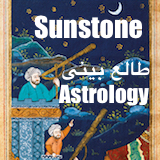The New Yorker:
Growing up in a black-and-white world of cocktail parties, psychiatrists, talking dogs, and the deeply other.
By Roger Angell
“I always look at the cartoons first,” everyone says. So do I, and I’ve had practice. When I say that I grew up looking at New Yorkercartoons, I do not speak in metaphorical terms. My mother, Katharine Angell—later Katharine White—became an editor for the newborn magazine in 1925, the year I turned five, and because she was involved in the art as well as the prose of Harold Ross’s little enterprise there were always photocopied drawings (with the captions typed on the back) and covers, along with fiction galleys and Talk of the Town pages, all over the house. I went for the cartoons right away. It’s odd to look back on this precocious diet and wonder what I made of Ralph Barton’s gin-raddled nineteen-twenties weekenders or the florid fake engravings by John Held, Jr., which spoofed everything Victorian. I passed them over, I suppose—storing them away in memory until my sophistication quotient caught up a little—and ate up the rest: the covers, which were so much brighter and livelier than my children’s-book jackets, and, inside, Rea Irvin’s plump paired cops tooling around in tiny roadsters; Peter Arno’s thin young men in tails crowding into speakeasies; and engrossing multipart strips, like O. Soglow’s Little King running away to join some gypsies; the dusty crosstown peregrinations of a restaurant hard roll, from bakery to diner’s plate, as delineated by Al Frueh; and Irvin’s boldly inked parson rushing over hill and dale, in full ecclesiasticals, to bless the fox after he has blessed the hounds. The first New Yorker cartoon to become famous may have been George V. Shanks’s circus mishap—the butterfingered trapeze artist apologizing, and his dropped partner glaring back up from the bottom of the page. I got that right away.
I can’t remember myself often asking for help with a caption or a situation. One exception was Helen Hokinson’s American lady in a Paris back street shyly asking, “Avez-vous ‘Ulysses’?” A book banned in this country, I was told, and, uh—well, it’s hard to explain. I was still only ten. I never said anything about an earlier, darkly brooding Reginald Marsh drawing of a bored, vulturous cleric, from a 1929 issue, which my mother had put up, matted and framed, in a corner of the hallway, but I kept stopping to look it over. “Let us pray,” he is intoning into a basketlike nineteen-twenties radio microphone just under his chin: a biting joke back then, when radio was so new—and still disturbing now. I don’t think Pat Robertson would put it up in his hallway, I mean.
Go to link










Comments